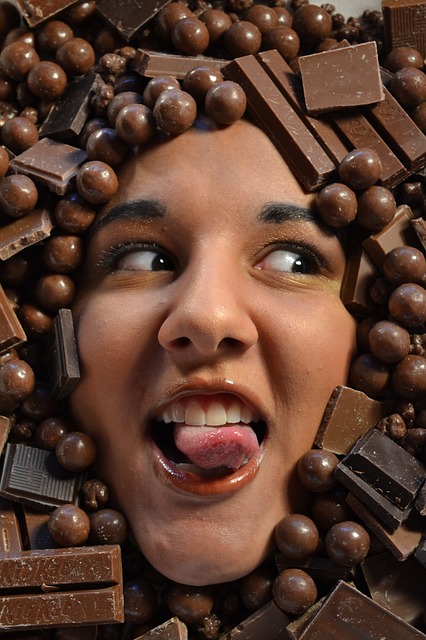If you can’t imagine life without chocolate, you’re lucky you weren’t born before the 16th century. Until then, chocolate only existed as a bitter, foamy drink in Mesoamerica. So how did we get from a bitter beverage to the chocolate bars of today? Deanna Pucciarelli traces the fascinating and often cruel history of chocolate.
.
Watch:
Glossary
- concoction – something prepared or devised by combining different ingredients
- (to) froth – small, white bubbles on the surface of a liquid; to have or produce a lot of small bubbles that often rise to the surface
- to beat someone to something – to do something before someone else
- salacious – lustful
- to persist – if something undesirable persists, it continues to exist
- indentured – relating to an agreement in which someone works for someone else until they have paid back a debt (especially in the past)
Fill in the gaps
in the video extracts with the words in bold below:
invigorating treat drinkable beans sweetening
delicacy ground foam bitter ailments
As far back as 1900 BCE, the people of that region (Mesoamerica) had learned to prepare the 1. ………. of the native cacao tree. The earliest records tell us the beans were 2. ………… and mixed with cornmeal and chili peppers to create a drink – (…) a bitter 3. …………. concoction frothing with 4. ……… . (…)
The first transatlantic chocolate encounter occurred in 1519 when Hernán Cortés visited the court of Montezuma. (…) The colonists returned with shipments of the strange new bean. At first, its 5. ………. taste made it suitable as a medicine for 6. ……………, like upset stomachs, but 7. ………………. it with honey, sugar, or vanilla quickly made chocolate a popular 8. …………… in the Spanish court. (…)
The world of chocolate would change forever in 1828 with the introduction of the cocoa press by Coenraad van Houten of Amsterdam. Van Houten’s invention could separate the cocoa`s natural fat, or cocoa butter. This left a powder that could be mixed into a 9. ………….. solution or recombined with the cocoa butter to create the solid chocolate we know today. (…) By the 20th century, chocolate was no longer an elite luxury but had become a 10. ………….. for the public.
Key: 1. beans; 2. ground; 3. Invigorating; 4. foam; 5. bitter; 6. ailments; 7. sweetening; 8. delicacy; 9. drinkable; 10. Treat
Practice Makes Perfect
Read the first two extracts (How is chocolate made? and What is bean-to-bar chocolate?) of the article Everything You Don’t Know About Chocolate (https://www.nytimes.com/2020/02/11/dining/chocolate-bar.html) and decide if the sentences below are
True or False?
- The prices of chocolate have plummeted over years.
- The shelled and crushed cocoa beans can’t be added to baked goods.
- The process of conching, which is about reducing the size of the sugar and cacao particles until they feel like satin on the tongue, can last up to three days.
- Bean-to-bar chocolate makers buy beans in large quantities and generally at a reduced price.
- When Gary Guittard (the owner of the Guittard Chocolate Company) tried some of Scharffen Berger’s chocolate, he decided to improve his own production.
Key: 1F; 2F; 3T; 4F; 5T
Discuss:
- What’s your favourite kind of chocolate?
- How does eating chocolate make you feel?
- Do you like getting chocolate as a present?
- Why do you think so many people are addicted to chocolate?
- Is chocolate healthy?
Explore it more to create your own teaching-learning experience!
Frequent Chocolate Eaters Have Lower BMIs (Body Mass Index)
https://www.scientificamerican.com/podcast/episode/frequent-chocolate-eaters-have-lowe-12-03-28/
newyorker.com/…/quarantine-fashion-for-the-week-ahead
(1962)






